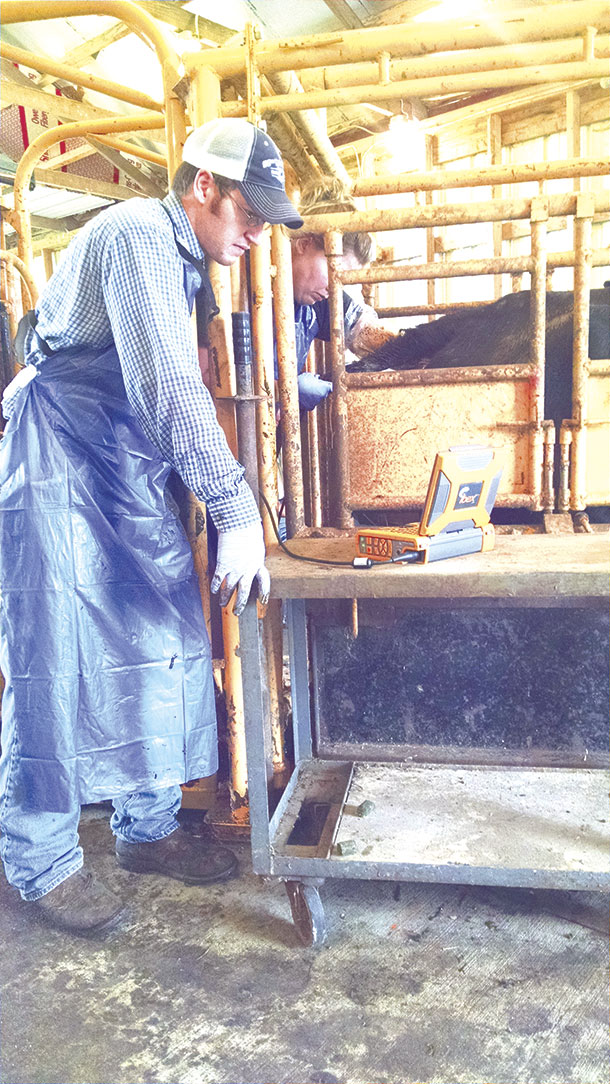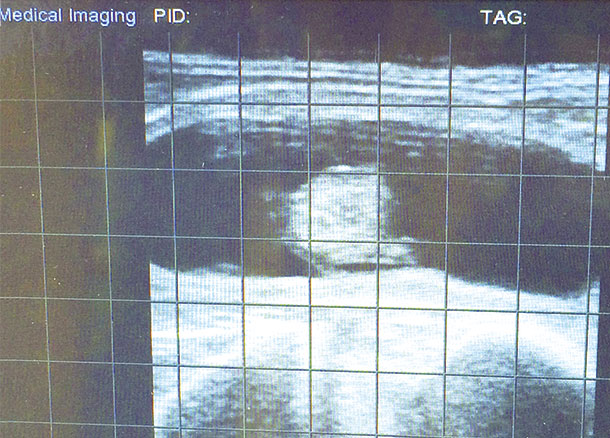While cows don’t need much more than good grass to eat, the length of the breeding season is one area that needs to be managed properly in order to meet the goals for the next calving season.
If you’ve ever thought to yourself, “When did we turn out the bulls?” you might work on a very busy cattle ranch. The day breeding season starts, whether it’s artificial insemination or natural service, is an important day that needs to be on the calendar and referred to throughout the summer.
From that date on, several tasks on the ranch will be planned out for the rest of the season. These tasks include determining the length of the breeding season, when to pull the bulls from the pasture and when to conduct the first pregnancy check.
Breeding season length
The length of the breeding season is directly correlated to the length of the calving season. However, it seems that everyone is always ready for calving to be done, but never ready to pull the bulls in the summer. With proper herd management, nutrition and body condition, cows should be cycling within a month after calving.
Therefore, when bulls are turned out to pasture, a majority of cows should be ready to breed and capable of conceiving at first service.
According to Cow Herd Appraisal Performance Software (CHAPS) data, 60 percent of cows should conceive during the first 21 days of the breeding season. So the remaining 40 percent should be able to conceive during the next 21 days, right? Only in a perfect world.
Outside factors such as bull servicing ability and environment (heat, flies, drought) can make this breeding benchmark hard to achieve. One option is to strive for a 60-day breeding season that will still yield optimal pregnancy rates, while resulting in a condensed calving season and a return to a uniform calf crop.
Pregnancy detection
With the evolution of technology, there are several methods of pregnancy detection available for producers to choose. Rectal palpation has been used for decades and still remains a viable way for an experienced person to physically palpate the fetus and determine the gestation length (age of the fetus).
This method is quick, requires no extra equipment and is a low-cost option for producers. Palpation can be done starting at day 45 and up to the last trimester.
Another option available is transrectal ultrasonography. With this method, an ultrasound machine connected to a probe is inserted in the rectum, either by hand or with a hands-free probe extender, allowing the fetus to be examined visually.
 Advantages of ultrasound include earlier determination of pregnancy (as early as 30 days), more accurate fetal age determination, sexing, presence of multiple fetuses, as well as visual inspection of other structures of the reproductive tract.
Advantages of ultrasound include earlier determination of pregnancy (as early as 30 days), more accurate fetal age determination, sexing, presence of multiple fetuses, as well as visual inspection of other structures of the reproductive tract.

Lastly, blood tests can detect pregnancy by measuring the amount of pregnancy-associated glycoproteins (PAGs) secreted by the placenta. Blood sample tests can start on day 28 and can be sent to a lab or done at home, depending on the kit used.
The advantages of blood tests are they can be done early and do not require skilled technicians. However, some disadvantages are that results are not immediate, and cattle cannot be sorted based on pregnancy that day.
Lastly, if a cow lost the pregnancy, PAGs will remain in the blood for an extended period of time (60 days), so false positives are possible, and companies recommend rechecking pregnancy again later in the season.
Cost comparison
Bred cows are worth more than open cows, right? While this is true, leaving bulls in year-round can be a much less efficient project to manage. For example, preg checking cows before removing bulls from the pasture can be difficult for the technician, since fetuses of all ages will be present.
In addition, cows that may appear “open,” could be less than 30 days bred and will have to be rechecked at a later date. At the same time, the fetuses in cows bred early in the season will have larger calves in them and may be difficult to age correctly since it might be already over the pelvic rim.
If you forget to pull the bull or if a longer breeding season is required to increase pregnancy rates, for financial and management reasons, cows should be managed and sorted based on pregnancy distribution. Preg checking cows and keeping all cows bred early in the season can be one way to accomplish this.
Anything bred later than desired (after 45 or 60 days) could then be marketed to herds that calve later than yours do. These cows that were classified as “late” in your herd may fit well into another operation. In addition, selling these bred cows will not only keep your calving season condensed, but also bring in some additional revenue.
Lastly, cows that do come up open can be marketed right after the pregnancy check to eliminate further feed costs. Another option, if cost-effective, is to feed open cows a high-energy ration to increase weight and condition, as well as avoiding marketing cows in the fall when the market is at a seasonal low.
To-do list
Take some time to calculate how long bulls have been out to pasture and determine when they need to be pulled based on your marketing strategy and herd goals. Communicate breeding and fall pregnancy-check plans with family, friends and herd advisers to ensure all areas of the ranch are on the same page.
Lengthening the breeding season doesn’t mean greater revenue and can often be the exact opposite. By properly managing the breeding season and pregnancy checking cows early, bred cows can be managed more profitably throughout the rest of the year. ![]()
PHOTO 1: Cattle in a pasture. Staff photo.
PHOTO 2: An ultrasound is being used as a method to detect pregnancy.
PHOTO 3: Ultrasound can detect pregnancy as early as 30 days. Photos provided by Taylor Grussing.

-
Taylor Grussing
- Cow-Calf Field Specialist
- SDSU Extension
- Email Taylor Grussing










